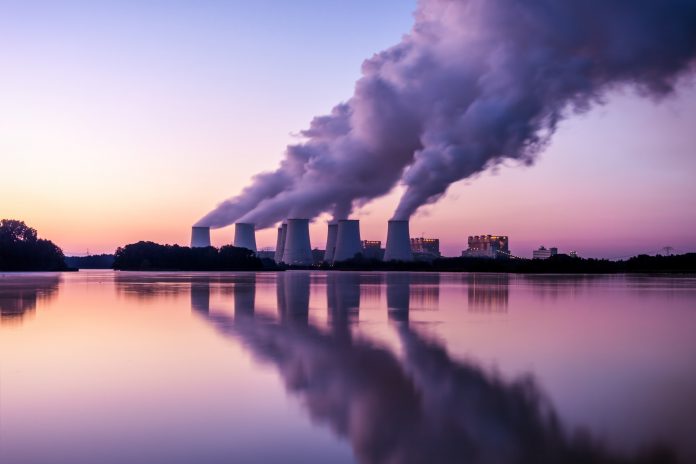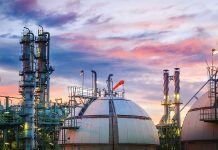The creation of the sustainable bioproduct, acetic acid, out of carbon monoxide derived from captured carbon is the newest way researchers are helping the push towards net-zero
Carbon capture and transportation are crucial for the journey towards net-zero greenhouse gas emissions by 2050, a target laid out by the Bipartisan Infrastructure Law of 2021.
The Bipartisan Infrastructure Law and reducing carbon emissions
The Bipartisan Infrastructure Law, also known as the Infrastructure Investment and Jobs Act, is an investment into United States infrastructure, workers, families and competitiveness.
“The infrastructure deal includes more than $62bn for the US Department of Energy (DOE) to deliver a more equitable clean energy future for the American people”
Finding a novel catalyst to create a sustainable bioproduct
Researchers from Northwestern University, along with an international team of collaborators, have been working to create acetic acid. Although, it’s the way this acid is created that may help the continued mitigation of the climate crisis.
Derived from captured carbon, the innovation uses a novel catalyst created in the lab of Professor Ted Sargent that could spur new interest in carbon capture and storage.
New interest in carbon capture and storage
“Carbon capture is feasible today from a technical point of view, but not yet from an economic point of view,” Sargent said.
Carbon capture is feasible today from a technical point of view, but not yet from an economic point of view
“By using electrochemistry to convert captured carbon into products with established markets, we provide new pathways to improving these economics, as well as a more sustainable source for the industrial chemicals that we still need.”
Published in the journal Nature, the alternative method takes place via a two-step process.
- First, captured gaseous CO2 is passed through an electrolyser, where it reacts with water and electrons to form carbon monoxide (CO).
- Next, gaseous CO is then passed through a second electrolyser, where another catalyst transforms it into various molecules containing two or more carbon atoms.
Acetic acid and its potential
Although people may most associate acetic acid with being the key component in household vinegar, recent University of Toronto PhD recipient Josh Wicks explained vinegar is only one of its jobs.
“Acetic acid in vinegar needs to come from biological sources via fermentation because it’s consumed by humans,” Wicks explains.
“90% of the acetic acid market is for feedstock in the manufacture of paints, coatings, adhesives and other products. Production at this scale is primarily derived from methanol, which comes from fossil fuels.”
Lifecycle assessment databases showed the team that for every kilogramme of acetic acid produced from methanol, the process releases 1.6 kg of CO2.
Finding the right catalysts to create sustainable bioproducts
“A major challenge that we face is selectivity,” Wicks points out.
“Most of the catalysts used for this second step facilitate multiple simultaneous reactions, which leads to a mix of different two-carbon products that can be hard to separate and purify. What we tried to do here was set up conditions that favour one product above all others.”
“Modern research problems are complex and multifaceted and require diverse yet integrated capabilities to analyse materials down to the atomic scale,” Dravid said.
The team’s analysis showed that using a much lower proportion of copper (approximately 1%) compared with previous catalysts would favour the production of just acetic acid.
It also showed that elevating the pressure to 10 atmospheres would enable the team to achieve record-breaking efficiency.
Faradic efficiency
In the paper, the team reported a faradic efficiency of 91%, meaning that 91 out of every 100 electrons pumped into the electrolysers end up in the desired sustainable bioproduct — in this case, acetic acid.
“The highest faradic efficiency for any multi-carbon product at a scalable current density we’ve seen reported,” Wicks said. “For example, catalysts targeting ethylene typically max out around 70% to 80%, so we’re significantly higher than that.”
Continued catalyst stability
The new catalyst appears to be relatively stable: while the faradic efficiency of some catalysts tend to degrade over time, the team showed that it remained at a high level of 85% even after 820 hours of operation.
Wicks hopes that the elements that led to the team’s success – including a novel target product, a slightly increased reaction pressure, and a lower proportion of copper in the catalyst – inspire other teams to think outside the box.
“At some point, we’re going to have to decarbonize all the elements of the chemical industry, so the more different pathways we have to useful products, whether it’s ethanol, propylene or acetic acid, the better.”
At some point, we’re going to have to decarbonise all the elements of the chemical industry





